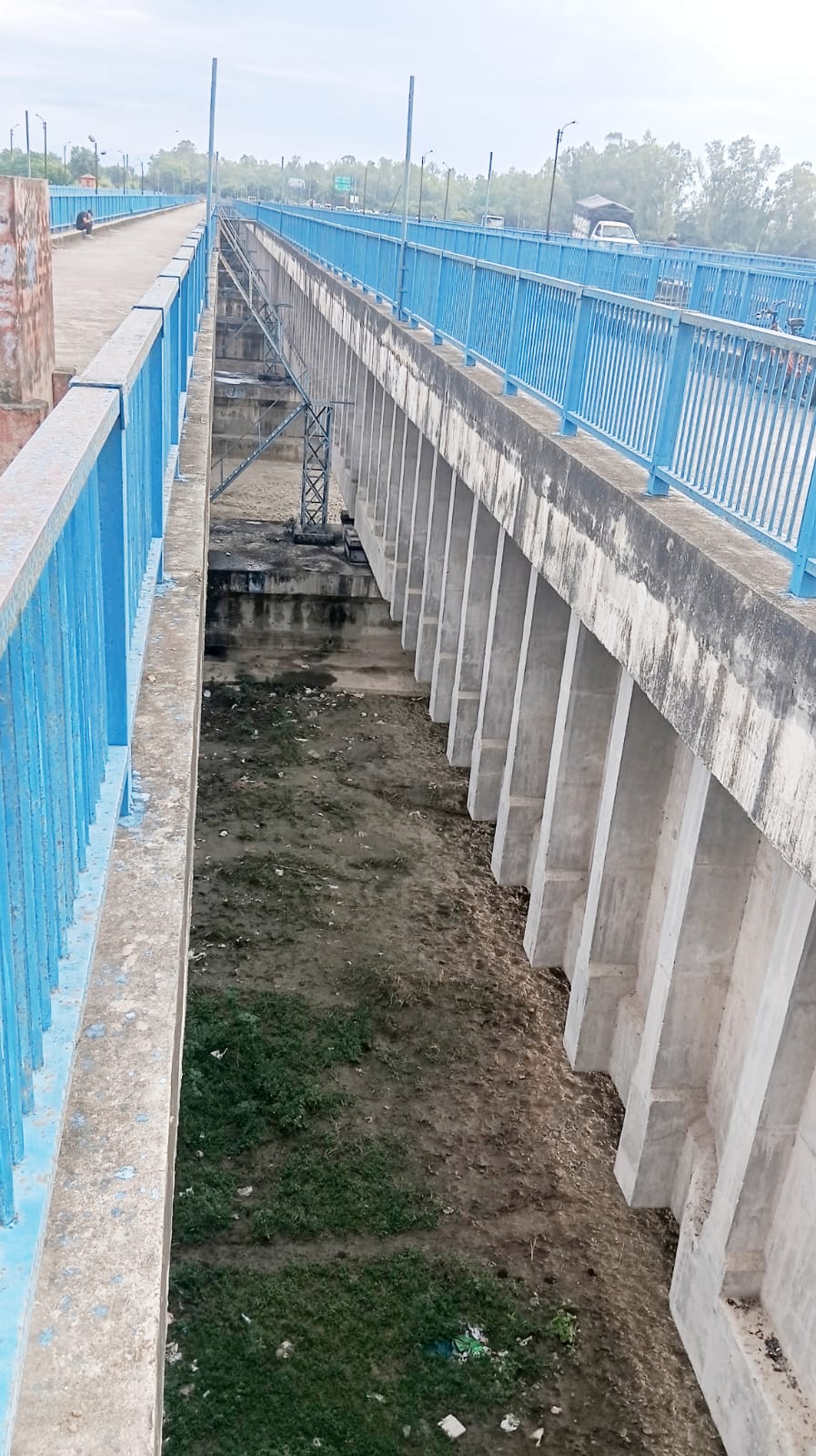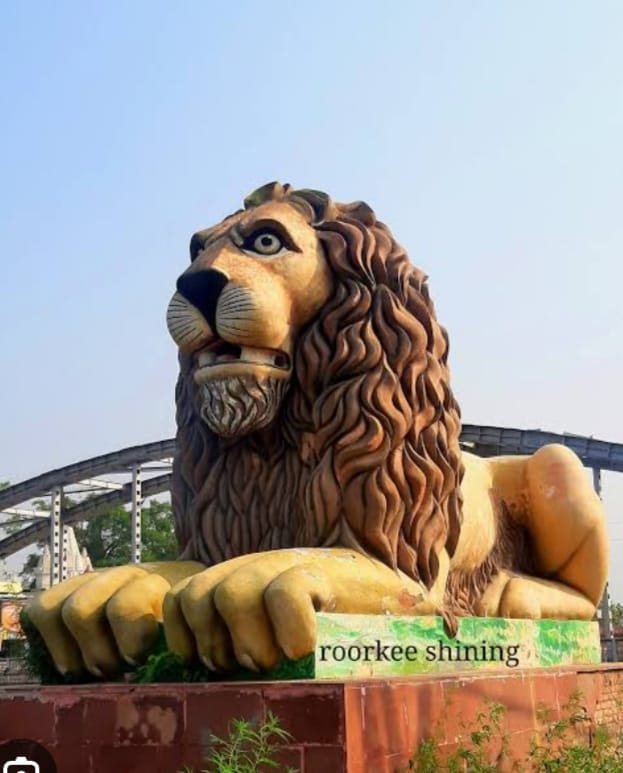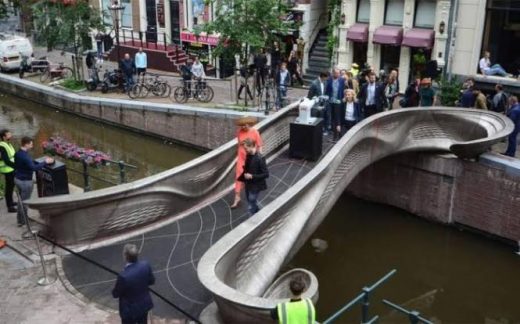By
Kaushal Kishore
Materials Engineer, Roorkee
The new Solani aqueduct on Ganges canal Roorkee was built with prestressed concrete which allows for longer spans and a simple more robust design compared to old bricks, lime- surkhi mortar masonry arches of the old aqueduct, in which 8.5 crores bricks were used, while iron railing used in the sides of two lanes were imported from England. This is interesting to note that materials bringing those days on ship from England to Indian ports take 6-10 weeks via the Suez canal or 3 to 6 months via the longer Cape of Good Hope. Calculate in it also time taken on road from Indian ports to Roorkee.
After retirement from University of now IIT Roorkee I joined M/S Roffe Construction Chemicals Pvt.Ltdd, Mumbai as it’s Chief Concrete Technologists afterwards I became it’s one of the Director.

AQUEDUCT picture taken on 7/10/2025
For the contractor of above aqueduct I designed M-40 grade of concrete with Roffe superpladticizer. Those interested may read my paper by visiting Google site and log in; Civil engineering portal The Ganges canal by Kaushal Kishore.
I had designed numerous concrete mix design almost all cements of India in this I find Utra Tech cement as one of best cement OPC and PPC both With Ultratech cement I had designed numerous concrete mixes from ordinary strength to M-80 grade concrete, self compacting concrete, shot crete concrete, fibre reinforced concrete, fly ash concrete and more There is life after retirement and after retirement I worked for 30 year’s which includes in free time working in home research and testing laboratory and numerous construction sites visits almost all India and outside India. At my age of 92 years I still work for 12 hours daily.
I had never worked for money. In spite of doing so gigantic work what to say about car I even do not have 2 wheeler not any of my house not a single inch of land in this world only pension from IIT Roorkee and few clothes


























give me some pointers,reviewer to become civil engr. ?! please
civil engineerin z the best1 but in pakistan v need practicals more specially in final year projects thre4 take proj not thesis
hi i m gonna enter for engineering….. n i wana ask is what would b the best university for civil engg. in Pakistan???
hi i m khurram u have any civil drawing send me beacause my auto cad tranning almost complete after 2 week final TEST please send me ([email protected])
thankx
hi dear, i just read your post, a simple answer for your question is that, UET peshawar is the best university of Pakistan for engineering. If you want to be a true Engineer you, then you must join UET Peshawar.
Thanks,
Wasif Mir
hi dear, i am msc maths.i take addmisation in online civil engineering degree. which universitie is better to me.pls infome me. ok
Thanks,
tahir
k.s.a.
NUST is the most prestigious university of pakistan……and also economical as well
Regards
is need of physics knowlwdge in civil
uday, there ll be physics in your 1st year of college…
but that ll be very easy. its not the case that there ll be advanced quantum or atomic physics. it ll be easy. go for it
i want tutors for civil eng. can u suggest any
i wanna be civil engineer and would like to ask whether we need to study chemistry
@lily :
yup u need to study chemistry as it has imp concepts of water n cement…
whch is d base of civil engineering….so study it hard..
Yes Obviously. But at Amateur level. there we’ll be Chemistry in your 1st year of college… Coz there are Materials like Concrete, Cement, Fly-ash, etc, which are deeply integrated with subject like Chemistry..
yes if u want to complete your degree in proper time..
if u dont study chemistry u will not clear ur exam and results supply. so that why u will nedd to study this… otherwise no use…
no it,s not so important………………….
hello i am a final year engg. student
i would like to know more about under reamed piles…….
pls tell me ,from where can i get details about that
u can look it up o the internet and in books
hmmmmmmmmmmm.u have to study any pakistani r indian author…………
Dear sir,
i am asking the question about the diffrence between One way Slab & Two Slab and What shold reinforcement & COncrete Ration fot the Slab
Thanks
Dinesh
hello….im interested to do civil engineering,can i have the option to make interior desigening in parallel…
I am very enjoy in joined the course.my class room is very jubilation watching in the subject.
hello .. i am so much interested to go for civil engineering my questions ‘ is that chemistry and desigening is important to study civil engineering and which college is much batter for studying civil engineering kindly advice m sir
with best regrade
hadayath
Engineering university of peshawar pakistan is the best for you my dear
what is sooooooooo much important to do civil engineering does anybody have exparience
to become a good civil engineer you must join a prestigious institute like Nust…..but for this you must burn midnight oil………………THANKXX
i m the student of civil engr and i try to become a best civil engr and built our country
how can i apply civil eng in usa in phd?
hello sir specially thanks for introducing varius civil engg…… aspect.
i am thinking to do civil engenering at Dr mgr engenering colege in chennai,is it good college.
I am doing my second year civil i want to know about the competetive exams which i could take and what measures should i take to achieve it
am a civil engineering student. I need help with the differnce btw oven and air drying on soil compaction.
Air dried soil means the soil which dry in open atmosphere below sun light, and oven dried soil means the soil which is dried 100 % in oven at temp. of 100 +/- 5 degree cel. constant for 24 hours, from above both cases u get different result but the oven dried soil result is more accurate than air dried as there is possibilities of some atmosphere moisture in it